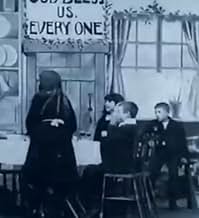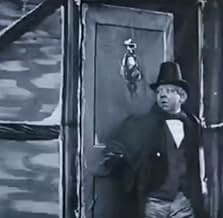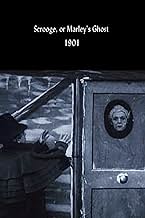Füge eine Handlung in deiner Sprache hinzuIt's Christmas Eve. The miser Scrooge and his assistant Bob Cratchit finish their work in the office and go home. When Scrooge is going to open his front door, he sees the face of Marley's g... Alles lesenIt's Christmas Eve. The miser Scrooge and his assistant Bob Cratchit finish their work in the office and go home. When Scrooge is going to open his front door, he sees the face of Marley's ghost in the door knocker. Inside he takes on his night dress, eats his supper, and falls a... Alles lesenIt's Christmas Eve. The miser Scrooge and his assistant Bob Cratchit finish their work in the office and go home. When Scrooge is going to open his front door, he sees the face of Marley's ghost in the door knocker. Inside he takes on his night dress, eats his supper, and falls asleep at the table. Marly's ghost shows Scrooge a vision of himself at a Christmas in the ... Alles lesen
- Regie
- Drehbuch
- Hauptbesetzung
Empfohlene Bewertungen
Aside from being the oldest surviving adaptation of Dickens's classic novel, there's nothing particularly special about "Scrooge; or Marley's Ghost". It's actually based more on J.C. Buckstone's stage adaptation "Scrooge". I'll forgive it for looking like it does - the background looks painted - since movies were just getting off the ground. My favorite adaptation of Dickens's novel remains "Scrooged", starring Bill Murray as a greedy TV exec (one of the lines describes a TV ad as "the Manson family Christmas").
Anyway, it's an OK movie.
This is perhaps the earliest screen adaptation of Charles Dickens' "A Christmas Carol". Apparently, there were earlier film versions of other Dickens' stories, but according to the British Film Institute, this is the earliest that survives. Ewan Davidson for the BFI further adds that it was based on a play by J.C. Buckstone, which like the film, dispensed with the different ghosts for a condensed vision provided by Marley's ghost. Additionally, Dickens, with this book, was one of the more important 19th Century writers to invent the family-oriented, charitable and gift-giving Christmas holiday that we know today. Likewise, this film is an early example of a Christmas film released during the season.
This was an elaborate film for 1901; originally, it supposedly contained 13 scenes. What remains is less than five minutes with about six scenes in their entirety and a brief glimpse of another scene. In what remains, there are some novel techniques for the time. There are multiple exposure shots for the ghosts, but this effect had already been done in previous films; this is, however, the earliest instance that I've seen of using the multiple exposure effect for overlapping images with title cards. This is also an early use of title cards in general, although they had appeared less elaborately in a few earlier films, including "How It Feels to Be Run Over" (1900). Furthermore, this is the first instance I've seen of the wipe, which transitions between shots. Dissolves are also used, which is a transition effect that Georges Méliès had already established in his films. Scenes are also tinted.
Wusstest du schon
- WissenswertesOriginally 620' in length, only 323' survive at the British Film Institute.
- VerbindungenFeatured in Arena: Dickens on Film (2012)
Top-Auswahl
Details
- Laufzeit6 Minuten
- Sound-Mix
- Seitenverhältnis
- 1.33 : 1
Zu dieser Seite beitragen



















